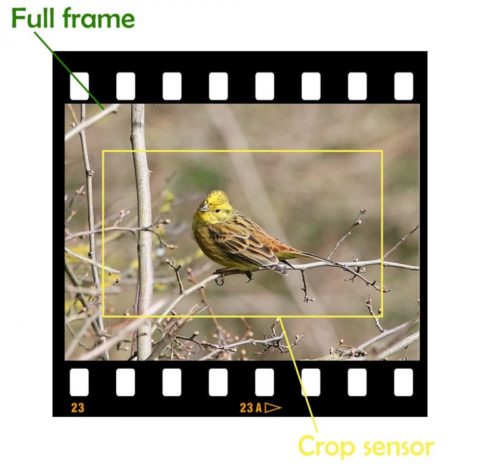I’ve just been watching a video that was downloadable from a link in a practical photography magazine. There was a professional photographer discussing zoom lenses and how they work on different types of camera and their pros and cons for photographing birds and other wildlife. He kept talking about “reach”.
The idea that if you put the same zoom lens on a full-frame camera (one with a sensor the size of an old 35mm type film camera) then your zoom is the equivalent of what it says on the dial. A 400mm zoom means a 400mm zoom on a full-frame camera. But, put the same lens on a camera with a smaller sensor (some times referred to as a crop sensor) and the same subject photographed from the same distance with the same zoom will fill more of the frame, they say, claiming it therefore has more reach. Depending on how much smaller the sensor you could see that 400mm lens looking at the distant subject as if it were a 600mm.

This is deceived wisdom, a myth, bovine ordure.
The same lens on the smaller sensor does indeed fill more of the frame, that is because the frame is that much smaller, not because the lens is somehow zooming in further or magnifying the subject. What is actually happening is that you’re not gaining zoom, you are narrowing the field of view. When you get back from the shoot, you can crop that full-frame photo in your image editing software to give you the same narrowed field of view. That is the equivalent of doing a digital zoom on a pocket camera as opposed to actual optical zoom and taking the snapshot.
There are, of course, differences in quality of full-frame and crop sensors and pixel count and pixel count to take into account when discussing the actual quality. However, given that, in general, full-frame cameras are targeted at the more pro than the consumer end of the market, the vast majority have a better sensor, better focusing, and better frame rate for so-called burst mode, when compared to crop sensor cameras. Things do change but the laws that apply to the branch of physics known as optics do not change just because you swap cameras.
Oh, the other thing that irritated me was that they were photographing birds from a bird hide, but they kept poking their lens out of the hide windows. Not the done thing. Kingfishers have pretty much 360-degree vision, you keep everything within the hide (lenses, hands, tongues etc) while observing QUIETLY!